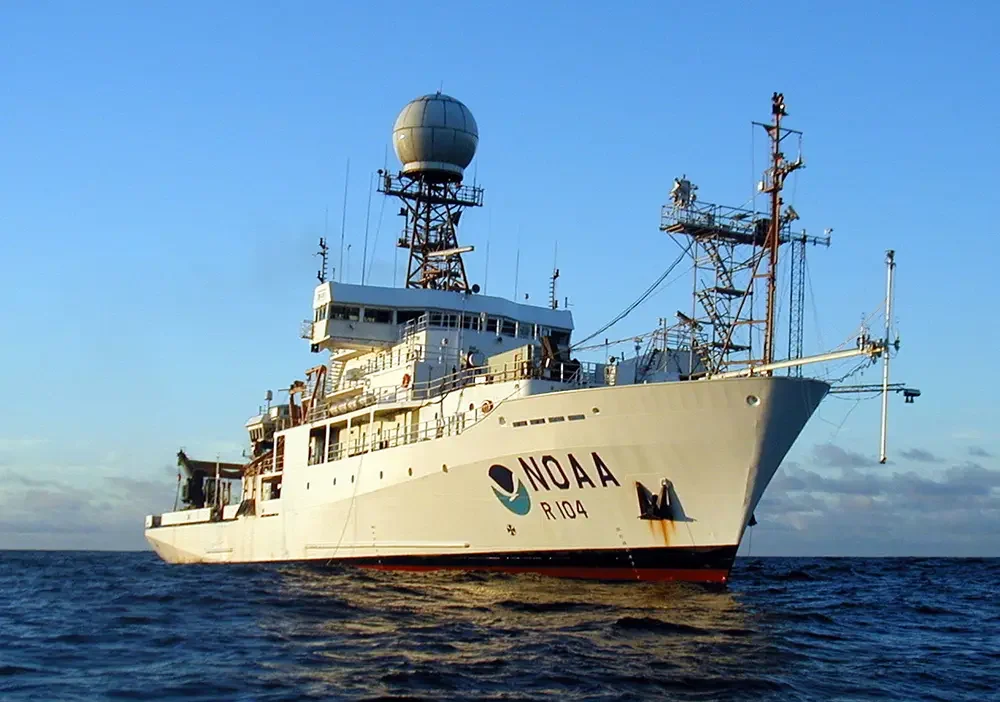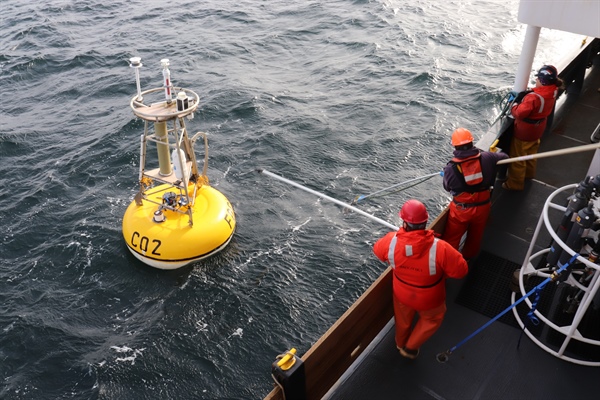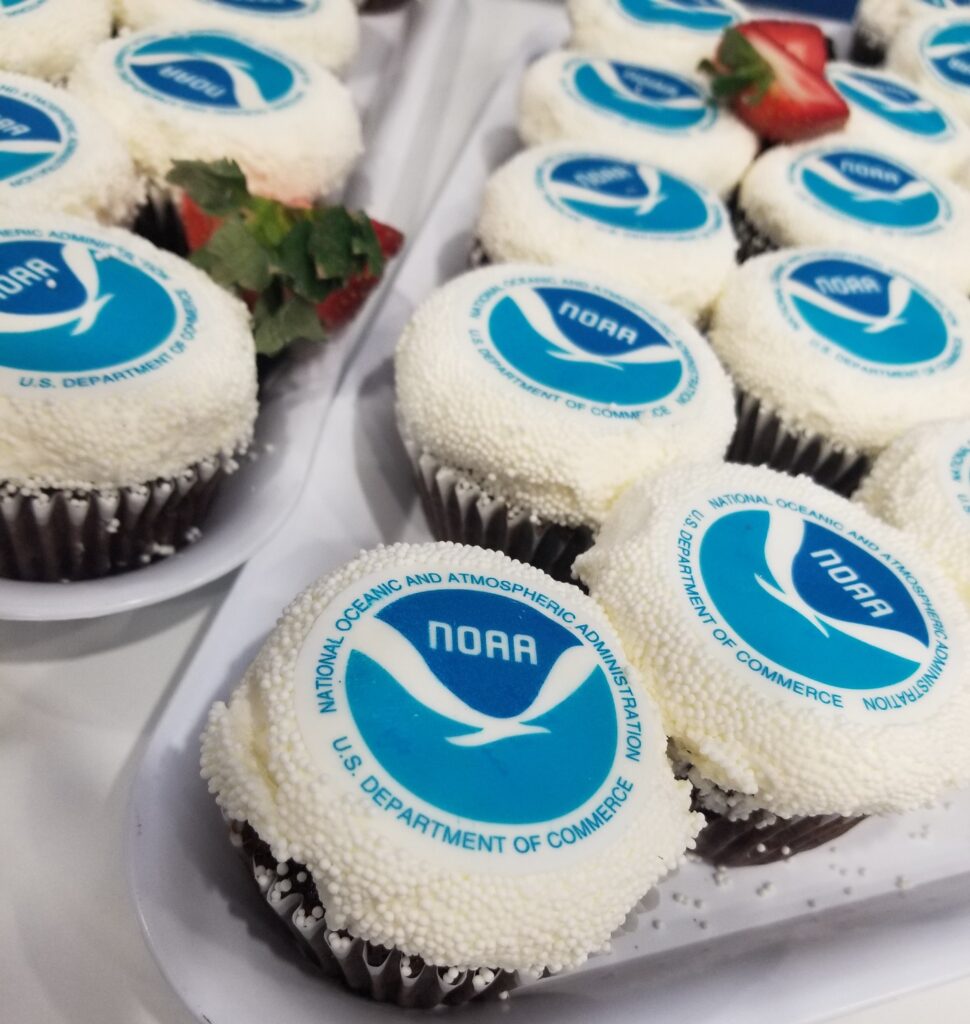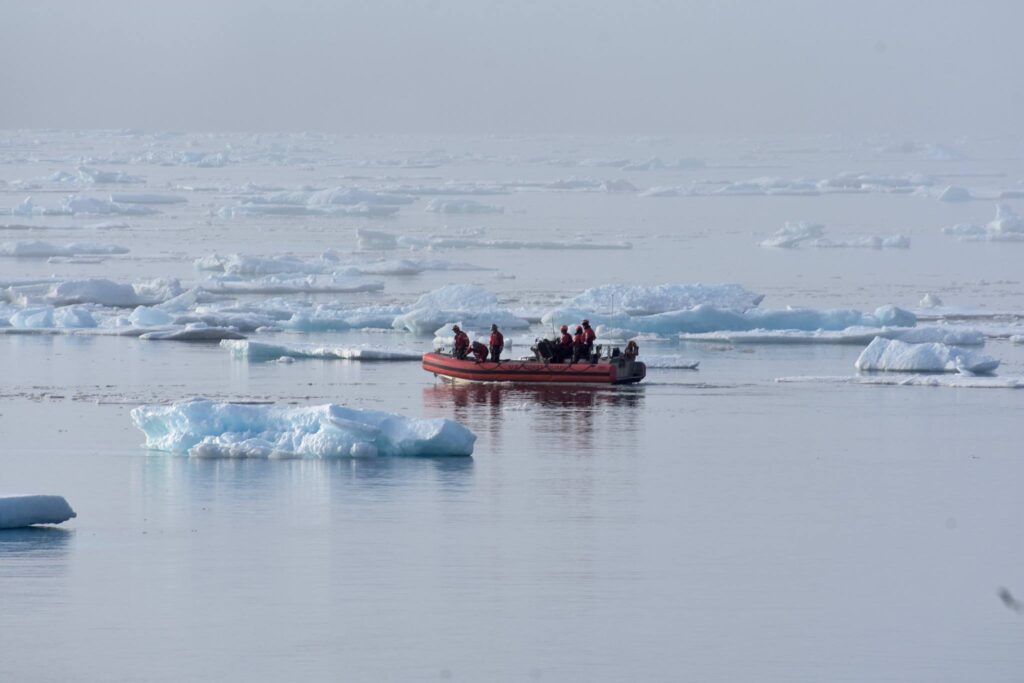2024 Global Carbon Budget Report Released
Every year, scientists from around the world, including NOAA experts, work together to produce the Global Carbon Budget. This annual scientific report tracks the origin and amount of carbon dioxide (CO2) emissions entering the atmosphere and where it is transported throughout the Earth system. Just like you might consider income, groceries, rent, utilities, and other expenses for your own personal budget, the Global Carbon Budget considers the amount of carbon in the atmosphere, ocean, and land, and how much of it is human-produced due to fossil fuel emissions and other human activities. The Global Carbon Budget helps scientists and policy makers assess progress towards meeting the goals of the Paris Climate Agreement in order to avoid the harmful impacts of rising global temperatures.
This year’s Global Carbon Budget reports that atmospheric CO2 concentrations will likely reach 422.5 parts per million (ppm) in 2024, which is 52% above pre-industrial revolution concentrations of 278 ppm in the year 1750. Fossil fuel emissions have decreased significantly over the last decade in 22 countries that are considered to have growing industrial economies, including the United States; however, overall global emissions continue to grow. “It is encouraging that global emission rates are not increasing as fast as in the past. We are getting to a point where the industrial nations are reducing emissions. We are making progress, but not nearly fast enough,” said Rik Wanninkhof, a Senior Scientist at NOAA’s Atlantic Oceanographic and Meteorological Laboratory studying ocean carbon.
NOAA’s contribution to the Global Carbon Budget
NOAA’s Global Ocean Monitoring and Observing Program (GOMO) provides a significant proportion of the ocean carbon observations used in the Global Carbon Budget. Through GOMO’s contribution to the Surface Ocean CO2 Reference Network (SOCONET), NOAA contributes seawater and atmospheric CO2 observations from a variety of platforms including commercial ships of opportunity, research vessels, buoys, and autonomous surface vehicles (e.g., Saildrones). Every year, this high quality data is assembled into a global database the Surface Ocean CO2 Atlas (SOCAT), which is utilized by the global carbon research community, including those that contribute to the Global Carbon Budget.




Measuring the ocean carbon sink
The ocean naturally absorbs approximately 25% of human produced CO2 emissions, serving as a sink that removes this greenhouse gas from the atmosphere. While this helps to offset the impacts of climate change, it can also have negative implications, such as ocean acidification, which can impact marine life and the people who depend on it.
The Global Carbon Budget uses models and observations to estimate how much carbon enters the ocean. However, there is a discrepancy between the methods used to estimate the ocean sink. While on average models predict a smaller ocean sink (the ocean absorbs less CO2), observational-based estimates predict a larger ocean sink (the ocean absorbs more CO2). “Our understanding of emissions and whether we are on track toward Paris Climate Agreement goals is contingent on an accurate understanding of the full ocean carbon budget,” emphasized Adrienne Sutton, an oceanographer studying ocean carbon at NOAA’s Pacific Marine Environmental Laboratory (PMEL).

Global Carbon Budget 2024 estimates of the ocean carbon sink using different methods. The green lines represent ocean sink estimates made with observational data (fugacity of CO2-products), and the purple lines represent ocean sink estimates made by models (Global Ocean Biogeochemistry Models [GOBMs]). The black line represents the mean of all methods, producing the Global Carbon Budget’s estimate of the ocean carbon sink (Socean). Notice that the green observational lines fall above the average, while the purple modeling lines fall below, indicating discrepancies in ocean sink estimation methods. Source: Friedlingstein et al. 2024.
Part of this discrepancy is due to decreasing observations of surface ocean carbon since the global pandemic in 2020. Interrupted ship operations during this time reduced observations from volunteer ships of opportunity, such as container ships, that were equipped with sensors to measure surface ocean CO2 along their routes. These operations have been slow to recover and the effects are still impacting ocean carbon observing capabilities today.
Observational gaps also persist in regions that are challenging to collect data from. For instance, with the technology currently available, it is challenging to collect measurements under and around sea ice and during turbulent storms, such as hurricanes. These missing pieces reduce confidence in scientists’ estimates of the global ocean carbon sink.
“There are several places in the ocean where the lack of observations, especially in the winter, may have an impact on observation-based estimates. We have been working with modelers to emphasize how these seasonal differences impact ocean carbon sink estimates in the regions where we don’t have enough data,” said Richard Feely, a Senior Scientist and Chemical Oceanographer at PMEL.
How NOAA is improving ocean carbon sink estimates
The Biden-Harris administration recently invested $2.1M from the Bipartisan Infrastructure Law to expand ocean measurements of CO2 to under-observed, climate-critical regions such as the Arctic and Southern Oceans by installing a new generation CO2 sensors on the NOAA Ship Ronald H. Brown and several other U.S. government and academic research vessels (UNOLS), including the U.S. Coast Guard Cutter Healy. Carbon dioxide sensors were also installed on Saildrone autonomous surface vehicles deployed during this year’s Atlantic hurricane season to improve measurements of the ocean carbon sink during extreme conditions. Filling these observational gaps could help increase our confidence in ocean carbon sink estimates.

tracks, while boxes indicate buoy locations. Source: SOCAT.
GOMO also recently supported workshops that brought modelers and observers together to tackle this issue of divergence in the Global Carbon Budget. Communication between these two communities is critical, as collaboration of efforts allows for a shared understanding of capabilities, resulting in a stronger science.
Finally, NOAA Research is developing an Ocean Carbon Observing Strategic Plan to improve ocean carbon cycle observations and research. A major theme of this plan is working to reduce uncertainty in ocean carbon sink estimates. This includes systematically determining where adding observations to fill gaps would be most valuable, improving carbon observing methodology, and developing technology to collect observations during wintertime and storms, and increasing collaboration with the international ocean carbon observing community.
These sustained and improved ocean observing strategies will be critical to improving estimates of the Global Carbon Budget. With a better understanding of the ocean carbon sink, we will be able to track planned emission reductions towards reducing the impacts of global climate change.
GOMO and NOAA-funded scientists contributing to the Global Carbon Budget include: Simone Alin (PMEL), Leticia Barbero (AOML/CIMAS), Eugene Burger (PMEL), Brendan Carter (PMEL), Richard Feely (PMEL), Andy Jacobson (GML/CIRES), Alex Kozyr (NCEI), David Munro (GML/CIRES), Denis Pierrot (AOML), Adrienne Sutton (PMEL), Colm Sweeney (GML), and Rik Wanninkhof (AOML). This program is managed by GOMO program managers Kathy Tedesco and Alyse Larkin, with support from Knauss Fellow Kyla Kelly.




